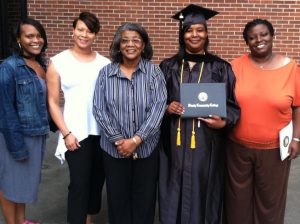
Linda Kelly, a 66-year-old mother of four daughters, was a special education teacher for sixth to eighth-grade students in North Carolina for many years. She was diagnosed with breast cancer 20 years ago and received treatment that included a mastectomy and radiation. The medical intervention saved her life but led to some later complications that forced her to seek additional care.
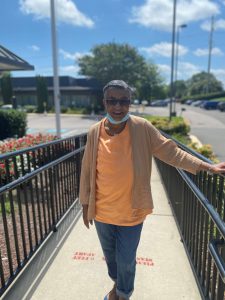
In March of 2020, Linda noted that her chest cavity, where the mastectomy had been performed, had started to weep. Linda first approached a hospital and care team in the Charlotte area. They established a plan for her and were getting ready to admit her for surgery. Then COVID-19 hit. The surgical team felt that Linda’s condition was not urgent and paused her care plan until further notice. Linda felt her condition was critical and required immediate support, so she sought a second opinion from the UNC Health system.
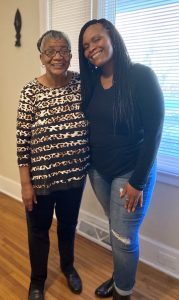
Linda’s daughter Kandis works as a social worker for UNC Chapel Hill in the Psychiatry Department. Kandis searched through the UNC Health Find a Doctor system for potential surgeons who could treat her mother. Together they chose Lynn Damitz, MD, Chief and Professor in the Division of Plastic and Reconstructive Surgery. Kandis also reached out to the doctors she works with: “I spoke to the doctors at UNC hospital in my unit, including my attending who recommend Lynn Damitz. He said she was the best. He did his residency with her, and he highly recommended her.”
Linda had an appointment with Dr. Damitz on May 27th. “I came to Dr. Damitz for a second opinion because the other system that I had consulted did not want to treat me with surgery because COVID had just come into play, and they were downplaying my condition as not critical,” recalls Linda. “Immediately upon seeing me, she agreed to do the surgery. When I left Stanly County, I came with my little bag packed because I hoped and believed that Dr. Damitz would keep me and perform the surgery that I needed.”
Due to COVID-19 restrictions, Dr. Damitz spoke with Linda by herself in the clinic while her family participated through FaceTime as they sat in the parking lot. While it was an unusual appointment, it allowed the family to be part of the experience and support Linda as the pandemic continued to change the healthcare system’s standard procedures.
“From day one, it was very evident to me that Dr. Damitz was different,” recalls Kandis. “She spent an enormous amount of time with not just my mom but also the family, explaining everything, answering questions, and keeping us informed each step of the way.”
Dr. Damitz explained to Linda and her family what they were facing. Linda was diagnosed with a chronic non-healing wound of the chest wall. After a mastectomy, what’s left behind is skin and subcutaneous tissue, the pectoralis major muscle on the ribs, and intercostal muscles (the muscles between the ribs). The wound had eroded through her skin, the subcutaneous tissue, the muscle, and doctors could feel her ribs at the base of the wound. They were concerned that her ribs didn’t have an adequate blood supply, resulting in osteoradionecrosis, a radiation-induced injury that can happen years after a person receives radiation treatment as Linda had. Because her ribs were exposed to the outside elements for six months to a year, doctors also were concerned that she may have osteomyelitis or chronic infection due to the exposure of the wound.
Dr. Damitz admitted Linda that day, scheduling her surgery immediately. Her treatment required a joint surgical approach between plastic surgery and the thoracic surgery team. Linda had necrotic tissue in her chest cavity that went through her chest muscle into her ribs and on her right lung. The procedure required Thoracic Surgeon and Surgical Director of the UNC Lung Transplant Program, Dr. Benjamin Haithcock, to remove four ribs and part of her right lung.
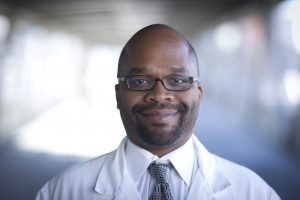
Dr. Haithcock talks about Linda’s case, ”Working with Ms. Kelly, her family as well as the plastic surgery team is one of the pleasures and exciting opportunities about working at UNC in regards to a multidisciplinary approach to patient care. Working with the plastics team, specifically with Dr. Damitz, solidified a cohesive working team so that we could address Ms. Kelly’s needs, desires, quality of life, and treat her disease.”
When Dr. Haithcock completed his portion of the surgery, Dr. Damitz then created what is referred to as a flap to cover up the wound area. She took the right latissimus dorsi muscle and advanced that through the axilla and into the defect, suturing the muscle into place over the defect. Dr. Haithcock had inserted absorbable mesh as well as biobridge, an absorbable plate material, that helps with reconstructing the chest wall so her lung doesn’t herniate out of her incision. The mesh and plates provide stability and scaffolding over the area where the ribs had been removed. The mesh and plates will eventually dissolve over about an 18-month period. Dr. Damitz put the muscle on top of the mesh and plates to reconstruct the chest wall. She then took a skin graft harvested from Linda’s leg on top to cover the wound.
Linda spent about three weeks in the hospital in Chapel Hill and was then discharged to a skilled nursing facility in Raleigh. She returned five days later for a follow up with Dr. Damitz. The appointment did not go as expected. Dr. Damitz found that the wound had opened. Linda had lost some of the skin graft and some of the muscle had separated from the local soft tissue.
Dr. Damitz readmitted Linda to the hospital in Chapel Hill, where she and her team took over the responsibility of wound care for the next seven weeks. Doctors also found she had a bone infection and worked to treat that with antibiotics. “Dr. Damitz and her team came to see me every day,” Linda recalls. “They changed my bandage. They asked me all kinds of questions. It was just amazing to see the care that Dr. Damitz gave to me because without her taking on this type of attitude and looking into my room, I’d be dead today. Dead from sepsis or something far worse, and no one even saw it coming. Because it took her to bring me in and to find it.”
Over the seven-week hospital stay, Linda was allowed only one visitor. Due to COVID-19, the hospital put very strict rules in place to protect patients from possible exposure. While it helped keep patients safe physically, it made for a lonely and isolating experience. “The only people I had to communicate with or identify with were the plastic surgery team and the staff,” Linda says. “They became my family.”
Linda shares a special memory of Dr. Damitz going above and beyond for her while she was stuck in the hospital. “The only complaint I had about the hospital was the food so when Dr. Damitz told me I had to be in there for the Fourth of July, I told her to just remember me with a big old juicy hamburger. And do you know that on the afternoon of the Fourth of July she came with a big old juicy hamburger? That really through me for a loop. I cried when she left because I was so thankful to the Lord for putting somebody in my life that really cares about me. It was really heartwarming. It gives me chills when I think about it.”
During her stay, COVID-19 was an added stress to the overall situation. Doctors, staff, and nurses were all aware of the psychological toll it took on patients like Linda. Recreational therapy was unable to attend to Linda, but the team banded together. “The doctors and nurses spent their own money to buy her coloring pencils, art therapy, all different kinds of activities, brand-new,” gushes Kandis. “They all bought her things with their own money, not money from the hospital. They did these things, which said a lot to me. I felt blessed that my mom was at UNC and under Dr. Damitz. I knew that she was cared for. It’s been a bumpy road, of course, everything wasn’t perfect. But I think she was in the best place for what she needed.”
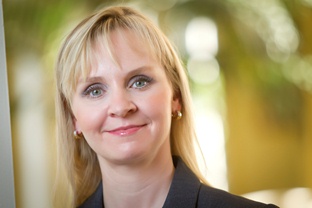
Dr. Damitz explains her perspective on the situation. “Linda was here at a time when her family couldn’t visit. With COVID-19, I’ve tried to spend more time with my patients because it gets so lonely in the hospital for them. Some of the issues that we were seeing were people more depressed and upset, mostly due to the fact that they couldn’t have visitors. I made it a point to stop by and see people more often than I ordinarily would because I felt like they needed that personal interaction in addition to the dressing care.”Linda did suffer from some hospital fatigue due to her extended stay. To help her during this time, the psychiatric team came in to care for her as well. “The psych team did a wonderful job,” says Kandis. “I trusted everything that they did with her. They were very professional. They also made sure the boundaries weren’t crossed because I am on the psych team. But I am her daughter and they only spoke with me when needed, which I appreciated.”
Dr. Damitz and her team monitored Linda and her condition closely. They changed her wound daily and worked to make sure that she did not develop any additional problems. “We kept her a long time,” explains Dr. Damitz. “I was committed to making sure that after we got her through this huge operation that I would do everything in my power to make sure before she left again that everything, to the best of our ability, was healed. We didn’t want another backslide where she goes home or goes to a skilled nursing facility and then would have to come back again. I thought that would be devastating not just from a physical standpoint but also from a psychological one.”
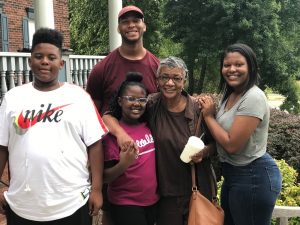
Linda was discharged from the hospital into the care of her daughter Kandis. Her family has had the chance to see her and support her since she left the hospital. Her recovery is still ongoing with twice a day bandage changes, home medical therapies, and additional follow up visits. But Linda reflects back on her time at the hospital and with Dr. Damitz. “I will never say I enjoyed the time there. I mean, that’s not where I would want to enjoy being, but I can surely say my experience there was very positive. I would say to everyone that Dr. Lynn Damitz is probably the best plastic surgeon in the world because of what she did for me. We will always be thankful because she saved my life, and she will be dear to us.”
